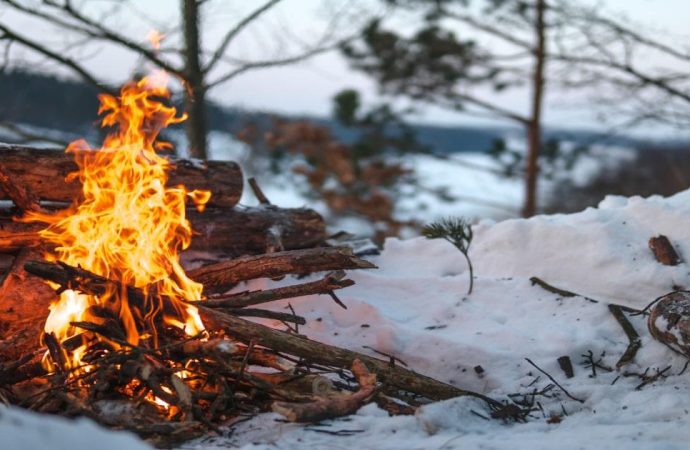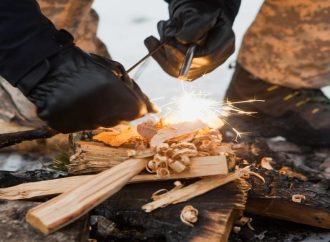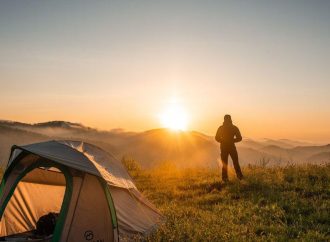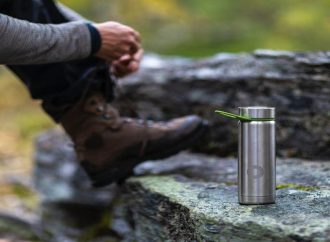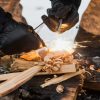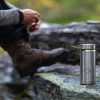Knowing how to light a fire in wind and rain is an absolute essential for all survivors in a SHTF situation. The benefits are endless – you can cook meals, keep warm, dry clothes, and purify water, just to name a few of hundreds of uses. We all remember the ‘Fire Triangle’ from school –
Knowing how to light a fire in wind and rain is an absolute essential for all survivors in a SHTF situation. The benefits are endless – you can cook meals, keep warm, dry clothes, and purify water, just to name a few of hundreds of uses.
We all remember the ‘Fire Triangle’ from school – combine heat, fuel and oxygen to create your own towering inferno. When you’ve got a clear, sunny day, it’s the easiest thing in the world.
But sometimes, the elements can prove difficult to successfully combat, especially if you’re bugging out and don’t have the luxuries of four walls and a roof when bugging in.
Rain and wind will both provide difficulties for your flames if they’re not blocked out with a shield, manmade or natural, especially when attempting to concentrate the combination of the three requirements – but with our help, we’ll give you all the info needed to tackle them successfully, and create a roaring fire to use.
Here’s our guide to lighting a fire in the rain or wind, when the elements really don’t want you to.
Assess Your Choice Of Tinder
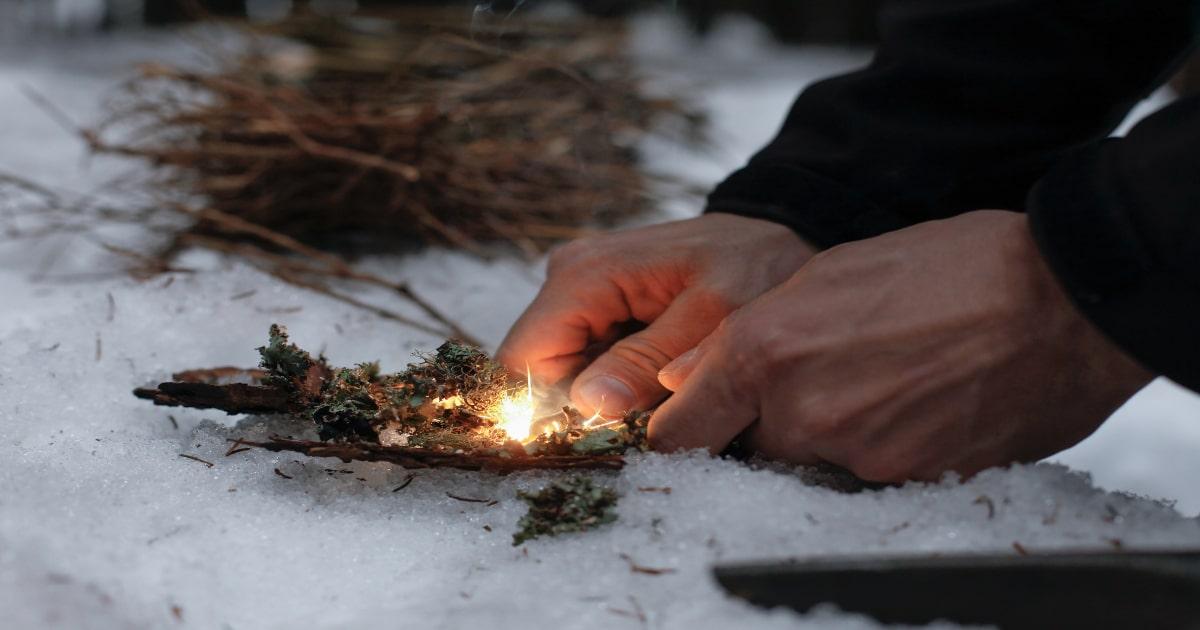
The things you choose to create your inferno are essential for obvious reasons – choose the wrong ones, and you’re out of luck as they won’t light. But choose the right ones, and they may burn too quickly, acting as a waste of precious resources in your time of need.
We strongly recommend pine needles and cones if you can find them. They dry quickly, meaning they are ready to use more readily than other alternatives, and are very easily found. If they aren’t scattered on the ground around you, then they will be in trees depending on the time of year.
Stuffing some tinder inside a pinecone will allow a small fire to kindle and be somewhat protected from strong winds.
You should always have some tinder kept in a dry tin for when you need to start a fire, and everything from dried moss or grass and fungi to cotton products soaked in an accelerant and lint can be used as tinder for a fire.
See our article here for a list of many things you can use as tinder, and learn how to make a featherstick here if you only have wet wood around you.
Other good woods to choose include willow and pine. These are durable, highly flammable, and dry quite quickly due to their low water content. Check out this post for an easy-to-use guide of which are the best firewoods, and which will prove to be less useful.
Build A Hole
This is particularly effective against wind, as you can use the ground itself to form a barrier against any gusts that will try to slow your fire down. It also proves useful when it’s rainy, as the soil deeper down is unlikely to be as wet as the higher layers that have been continually exposed to the elements.
To create your hole, take your survival shovel and dig down at least 3 or 4 inches, then begin to prepare your fire in the hole. Hunch yourself over or build a small wall of stones to prevent any wind getting in and strike your flame with a ferro rod or lighter.
Create A Base
This works when you are trying to create fire on wet or sodden ground. We’d advise against settling here for your shelter, but as a prepper sometimes you have very little choice in a SHTF situation.
Use materials like flat stones turned over or a few sticks in a row to form a platform or table for your fire, elevating it above the water or mud, the biggest threat to your fire’s success.
Unlike building a hole, this is one of the less effective measures against trying to light a fire in wind conditions, however you can place two large stones upright around the fire to make a windshield if you don’t already have a foldable fireshield one with you.
Find The Right Location
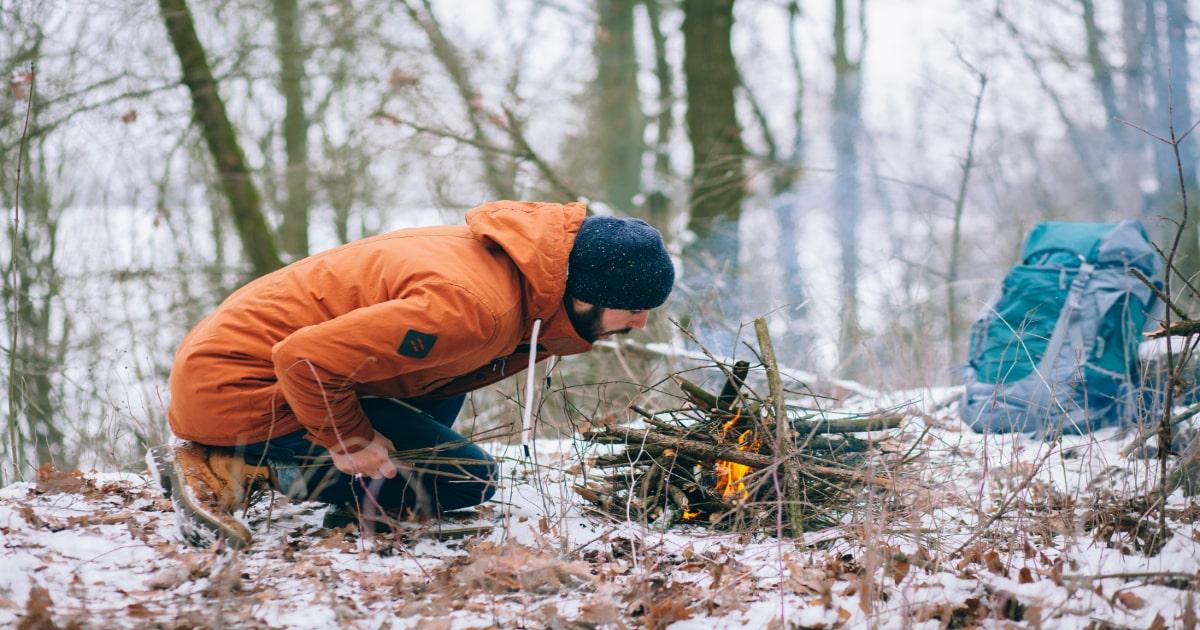
Location is everything when it comes to survival, and your chosen spot for your fire is no exception. It’s essential you choose somewhere that provides protection from the elements when you are trying to light a fire in wind or rain, while also ensuring it’s absent of any water on the ground, because this will act as the worst possible foundation you can start with.
It’s likely you have some tarpaulin, and this is a great material to use to protect against the wind and rain – underneath, above or around the sides.
If you can’t create comprehensive coverage, aim for a C-shaped shield that protects primarily against the up-wind currents. This will eradicate all of the main issues facing wind, the fire not being able to spread to other pieces of kindling and tinder, or the wind simply blowing it out.
You should be able to feel from which direction the wind is coming, but if you can’t discern then simply lick the whole tip of your finger and hold it up in the air. The side that begins to feel the coolest after a few seconds is the wind direction.
Another key thing to look for when choosing a location, is somewhere that has coverage. This can be thick canopies courtesy of trees, or something more established like a cave.
This would be the ideal situation, as you won’t even have to consider the rain – and if you’re only able to form a C-shaped block from the wind, you can cover the entrance with tarpaulin, essentially offering complete protection.
Prepare Yourself In Advance
A key aspect of being a prepper is your ability to think ahead – and one of the best ways you can get ready in advance to light a fire in wind or rain is by planning for your next fire. To do so, simply find the wood you want to use, and place them next to your fire.
Even if the rain has gotten the better of your collected wood, there’s no need to worry – because this (admittedly time-consuming) solution works for all wood, from the driest pieces to those that have spent a long time being exposed to the elements.
It’s important you also leave enough space for the smoke to escape, a this can create a very toxic environment for those using your fire, and also ruin the food you may be trying to prepare on it. The struggle isn’t the initial creation of the fire – it’s managing to keep it going.
Fire Shape
The way in which you stack your wood is going to make a huge difference to your fire when trying to light it in bad weather as you need the flames to be protected. You want the tinder that burns quickest at the bottom, with the thickest, slowest burning materials in a triangle shape that meets at the top, in the centre.
Summary
As you can see, learning how to light a fire in wind or rain isn’t actualy too difficult provided you know what to do. Yes, there are challenges, but these are easy to overcome by following the above guides.
The main issues arise when you have to face both wind and rain together – and although this does happen, you’re more likely to have only one of the two to deal with. As a backup you should always have a set of water-resistant stormproof matches.

